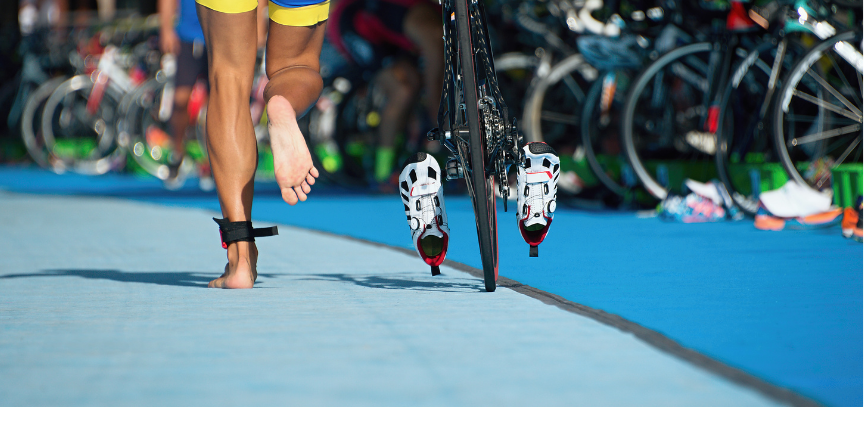Training for a triathlon is not an easy task. The repetitive stress can lead to pain, weakness, inflammation and injury. Cycling is most commonly linked to low back pain, neck pain and Achilles injuries. Whilst running can result in knee injuries or overuse hamstring and calf strains. Swimming is commonly linked to shoulder injuries.
What can you do to prevent injury?
The traditional view for training has often been more-is-better, however we now know this isn’t always the case. While training too little can result in not being prepared, training too much can lead to plateaus in strength and speed development, overtraining syndrome and burn out, and a higher risk of sustaining an overuse injury. A study in 2004 reported that a ‘sweet spot’ of training for triathletes averaged around 8 – 10 hours per week. These levels had a statistically significant decreased risk of injury. However the intensity, speed and duration of your training depends on your individual level of fitness and the type of competition you are entering.

A holistic approach to training is important. It is recommended to include strength and control exercises as well as stretching as part of your preparation every week. Consistent strength training which involves sport-specific muscle groups for 4-10 repetitions and 2-3 sets twice a week is linked with greater effects on performance. It is recommended that changes in the load should be kept to smaller increments of less than 10% at a time. Research also suggests that limiting the distance spent running uphill and placing a focus on distance rather than speed when cycling can lead to a reduction in injury. Additionally, in the lead up to a competition, slowly reducing your training load is associated with improved performance. This tapering of training is intended to minimize stress and fatigue. The intensity of training can be kept high during this tapering period, whilst volume reduces. Furthermore, nutrition, hydration, sleep, relaxation and emotional support all complement your preparation.
When to see physiotherapy?
Studies show that seeking physiotherapy treatment within a few days of injury or lingering pain helps relieve pain more rapidly, improves your performance and gets you back to training faster. A neglected injury has a higher chance of recurrence and the potential for resulting in other secondary impairments.
What will physiotherapy do?
Physiotherapy can help in two ways. It can complement your training to improve performance by addressing deficits in muscle strength, length or poor biomechanics. Recognising these niggles and biomechanical deficiencies early in training can combat injuries before they present. Secondly, if pain, reduced movement or injury do occur, it can be treated through soft tissue massage, joint mobilisation, dry needling and exercise prescription.



